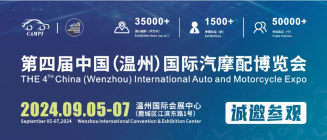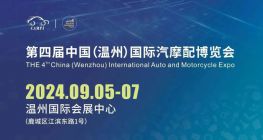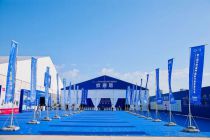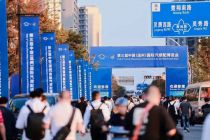For the science and technology circle, 2022 is doomed to turbulence.
The market fell, with China probability stocks bleeding, and capital market financing tightened. In the track where innovation consumes the most, every enterprise is faced with shuffling and survival war.
When the new car war entered the second half, Xiao Peng took the lead in marking four tracks: automatic driving, intelligent, robot and flying car. Only by handing in a touchable answer sheet can we keep ahead.
On the 1024 Xiaopeng Science and Technology Day in 2022, under the theme of "from foreseeing to not only meeting", "difficulties", "landing" and "vision" become three important keywords. We can see the most advanced direction of mass production automatic driving, the landing scheme with voice interaction larger than the screen, and the flying car that is closer to the robot dog "Little White Dragon" and can really "go to heaven".

Automatic driving, facing difficulties
He Xiaopeng, the founder of Xiaopeng Automobile, first raised an industry problem - high-precision map.
He said frankly that in the past planning of Xiaopeng, the advanced intelligent assisted driving in the urban scene should be launched in the last ten days of the first quarter of 2022. By the second quarter, several cities can be expanded, but by the third quarter, there are still many problems.
The question put forward by He Xiaopeng is actually a problem faced by every automatic driving enterprise.
As far as the current technical progress of mass production vehicles is concerned, automatic driving is still affected by cost, weather and performance. It is difficult to deal with complex road conditions and make truly intelligent and reasonable overall decision planning for environmental information by relying solely on the perception ability of a vehicle.
Therefore, the technical route of high-precision map+laser radar has become the first choice of many car enterprises. However, within the scope of current policies and regulations, only high-precision map review numbers of some high-speed highways and closed parks are allowed to be opened, and high-precision map review numbers of general urban roads are still difficult to obtain.
At the same time, high-precision maps lack industry norms, and existing players are building their own systems in the "barbaric growth". Map updating is also based on half a year, which makes it difficult to implement the intelligent driving system. For example, in the first half of the year, Guangzhou publicized 500 renovations, equivalent to nearly 2 every day. If the map cannot be updated in real time, it is difficult to ensure the safety of the auto drive system.
Especially in the urban scene where the major automobile enterprises are making efforts, the vehicle driving road is very complex, there are multi-layer variable lanes, the markings wear out quickly, the traffic participants are not limited, and the buildings are dense, which also poses great challenges to the signal transmission. It can be said that various factors restrict the landing of high-level intelligent auxiliary driving in urban scenes.
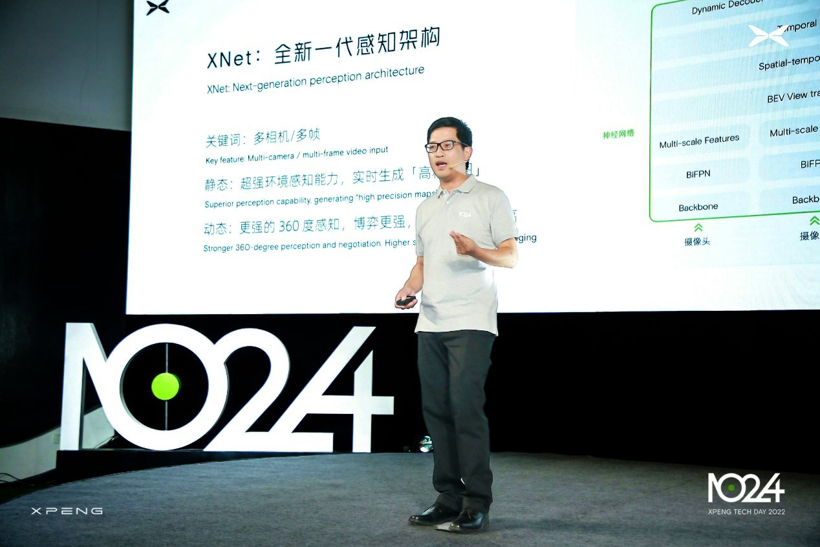
The person responsible for answering this question is Dr. Wu Xinzhou, vice president of automatic driving of Xiaopeng Automobile.
He first emphasized the significance of urban scenes to the development of intelligent driving, and pointed out that Xiao Peng insisted on the "first principle" of automatic driving, and only did high-frequency and just needed scenes.
Data shows that urban roads account for 71% of the total vehicle mileage of users, and the length dimension of vehicles can account for 90%. At the same time, only 25% of users travel by expressway every day, while 100% of urban roads.
In order to solve this problem, the urban NGP and LCC enhanced version of Xiaopeng Automobile adopt a new technical architecture, including positioning, perception, prediction, regulation and control capabilities.
Compared with high-speed NGPs, the number of codes in urban NGPs has increased by 6 times, the number of perception models has increased by 4 times, and the number of prediction/planning/control related codes has increased by 88 times.
The landing of the urban scene is just the beginning of the second half of intelligent auxiliary driving. The XNGP intelligent auxiliary driving system carried by Xiaopeng G9 has the capability of intelligent auxiliary driving in all scenes, and is also the ultimate technical form of auxiliary driving before unmanned driving.
What does Xiaopeng want to do?
First, get through the whole scene of assisted driving, and seamlessly connect urban roads, highways, parking lots and other scenes.
Second, the intelligent driving system can be universal without maps and maps to avoid being "stuck" by high-precision maps. In the future, XNGP will also support turning, turning around, lane changing and overtaking, bypassing obstacles, avoiding pedestrians and non motor vehicles in areas without maps.
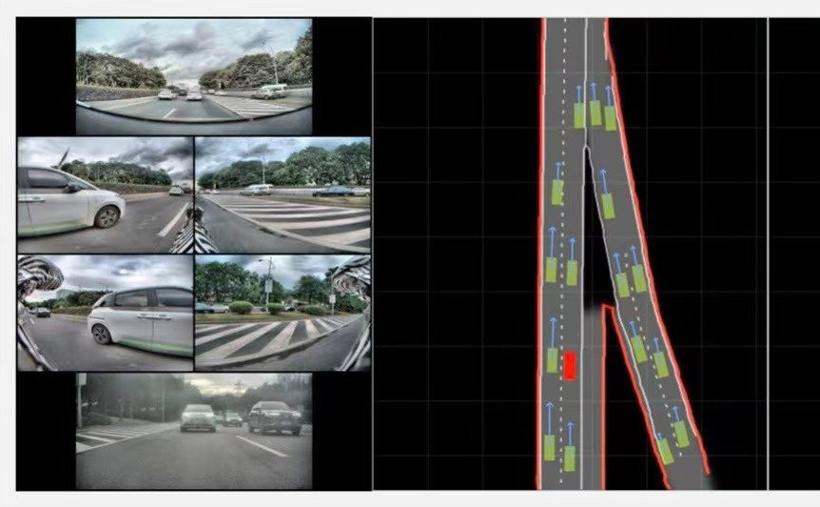
Third, solve Coner Case, generate a large number of data of the same type through the simulation system, and conduct rapid iterative training. Through the combination of directional acquisition and simulation, more than 1000 Corner cases (extreme scenarios) are solved in one year, and the high-speed NGP accident rate is reduced by 95%.
Finally, the goal of "catching up with and surpassing the old drivers" will be achieved.
Landing, the most difficult problem
In order to achieve this capability, Xiaopeng Automobile has substantially upgraded its hardware. On the new platform led by G9, Xiaopeng adopts 508 TOP computing power+dual laser radar+800W pixel high-definition camera, software architecture with improved application capability, full closed loop, self growing AI and data system.
Based on the new car, Wu Xinzhou demonstrated a new generation of perception architecture - XNET.
This new architecture has the ability to capture multiple cameras/frames, and will directly inject video streams from each camera into the deep learning network. Let it output 3D static/dynamic directly.
He said that in the static scene, XNet has super strong environmental awareness, which is basically equivalent to real-time generation of "high-precision maps". At the same time, XNET can generate lane lines, stop lines, sidewalks, driving distances, etc., which is the core ability to overcome the non graphic scene.
In the dynamic scene, the new system also has a stronger 360 degree perception and a higher lane change success rate.

Wu Xinzhou said frankly: "The most difficult place is the place closest to the car, which is the weakness of the sensor." For example, the lidar has a blind area within 1m, the millimeter wave has the same problem, and the camera has obvious boundaries in a single frame.
For this reason, Xiaopeng has adopted the front fusion dynamic detection scheme, which makes the system more stable in terms of vehicle cleaning object detection capability and higher lane change success rate.
Behind the technology is a huge work of data collection, annotation, training and spacing deployment.
Here, we will introduce the concept of deep learning technology. During the research and development of the auto drive system, it is necessary to "feed" a large number of cases to the system so that it can learn to judge by itself through continuous training.
But before learning, the system needs a huge amount of data. At the same time, in automatic driving scenarios, people, things and objects that need to be identified need to be "framed" manually in many cases.
To this end, Xiaopeng has built a fully automatic annotation system, with the annotation efficiency 45000 times that of manual annotation. At the same time, the ultimate engineering capability accumulated from the research and development of urban NGPs has enabled dynamic XNet to require 122% of Orin-X computing power, and only 9% after optimization.
Through the upgrading of software and hardware systems, the release plan of Xiaopeng's second generation intelligent driving assistant system XNGP is also on the agenda.
In 2022, Xiaopeng will deliver high-speed NGP, memory parking, LCC, intelligent parking and other functions.
In the first half of 2023, the city NGP will be released to support Guangzhou and Shenzhen, and Shanghai will be newly launched; The ability to recognize traffic lights and go straight through intersections across the country.
In the second half of 2023, lane changing, overtaking, left and right turning functions will be opened in most cities without maps.
In 2024, the whole scene will be opened up, and the intelligent navigation assistant driving ability from parking space to parking space will be realized.

In addition, Wu Xinzhou also brought the conventional "One More Thing" - Xiaopeng Robotaxi.
Xiaopeng G9 has become the first zero modification mass production vehicle that has passed the closed road test of automatic driving in China, and has obtained the road test license for ICV.
Wu Xinzhou said that he hoped to open Xiaopeng's own Robotaxitest operation in Guangzhou in 2023 or 2024, so that Xiaopeng could form good coordination and feedback with the main line of assisted driving and feed back assisted driving. It is hoped that in 2025, the development of Robotaxi and hardware capabilities can achieve "convergence" and enter the stage of high-level automatic driving.
Full scene voice 2.0
After talking about automatic driving, He Xiaopeng returned to the stage, bringing the industry's first full-time voice interaction function - full scene voice 2.0. Regardless of terminology, the features displayed on 1024 can already bring users a "more like talking to people" experience.
First of all, the system can process four channels of audio accurately at the same time. In other words, users can speak freely at any time. It also supports full scene voice, and can also serve without network.
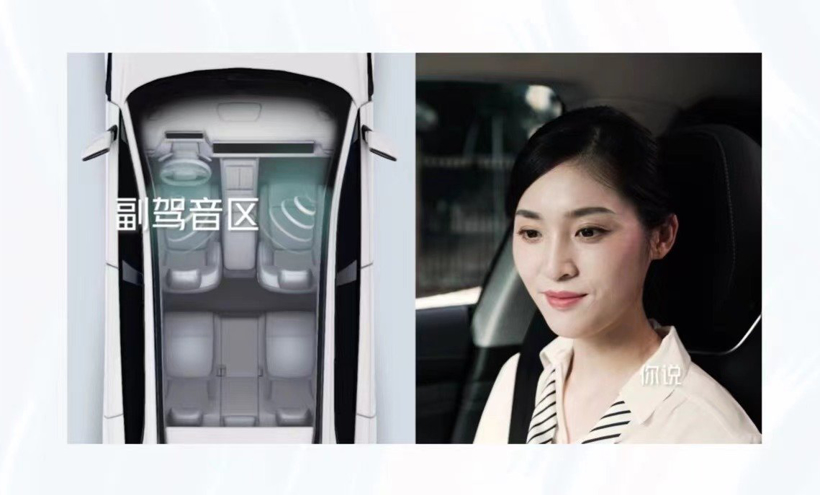
At the same time, the new system supports cross zone context dialogue, and the system can distinguish between small talk and instructions. On this basis, the new generation of voice functions can be faster and more accurate. The accuracy of semantic recognition is more than 96%, and the delay from issuing instructions to executing is less than 1 second. As can be seen in the demonstration video, it is basically possible to achieve seamless dialogue.
When introducing robots, He Xiaopeng said that no one really achieved mass production in this field. In the past six years of robot research and development, he has also been thinking about how robots can meet everyone's needs and give consideration to cost, safety and technology.
Flying Cars and the New Generation of "Little White Dragon"
On this Science and Technology Day, a new generation of "Little White Dragon" appeared. Compared with the previous generation, the model is more sci-fi and has a future style. The head is integrated with AR projection to explore the interactive form of robot.
At the same time, the "Little White Dragon" has also upgraded its architecture. The "bones" of its body and legs have borrowed from the lightweight design ideas in the automotive field, which are stronger and lighter than the original generation.

At the same time, He Xiaopeng also described a Xiaopeng ecosystem. In the process of R&D, intelligent robots can empower each other in terms of power system, automatic driving, human-computer interaction, R&D system and other technologies,
In this year's 1024, Xiaopeng Huitian, which is widely expected, also released the latest configuration of flying cars. It has an arm folding storage system, which can switch between land and flight modes.
In the folding and storage state of the boom, its size is equivalent to that of conventional cars, and it can run freely on open roads; It can switch between land mode and flight mode.
He Xiaopeng said that, under the conditions permitted by laws and regulations and the environment, flying cars can take off and land vertically and fly across congestion, obstacles, rivers, etc. to meet people's needs for short distance low altitude travel.

At present, Xiaopeng Huitian Flying Car has completed the successful first flight of the test sample vehicle, which is the world's first true electric vertical flying car.
In order to successfully take off the test sample vehicle weighing about 2 tons, it is necessary to overcome the difficulties in flight control, power and other aspects. There is no mature experience in the industry that can be used for reference. It can be said that Xiaopeng Huitian has reached a challenge through the self research of the whole stack, making a substantial breakthrough in the research and development of flying cars.
As far as the current 1024 is concerned, Xiaopeng's travel ecology has been built. In terms of intelligence, autopilot is the "last generation". It also introduces that cars, robots and flying cars can complement and coordinate data. This session of 1024 undoubtedly provides new possibilities for the travel field.
On September 5th, we invite you to join us at the Wenzhou Auto Parts Exhibition on a journey to trace the origin of the Auto Parts City, as per the invitation from the purchaser!
Hot Booking | AAPEX 2024- Professional Exhibition Channel for Entering the North American Auto Parts Market
The wind is just right, Qianchuan Hui! Looking forward to working with you at the 2024 Wenzhou Auto Parts Exhibition and composing a new chapter!
Live up to Shaohua | Wenzhou Auto Parts Exhibition, these wonderful moments are worth remembering!
Bridgestone exits Russia and sells assets to S8 Capital
Live Up to Expectations and Honor to End | 2023 Wenzhou International Auto Parts Exhibition Successfully Ends! Looking forward to meeting you in 2024!
Free support line!
Email Support!
Working Days/Hours!
